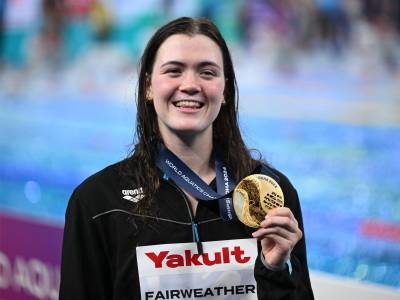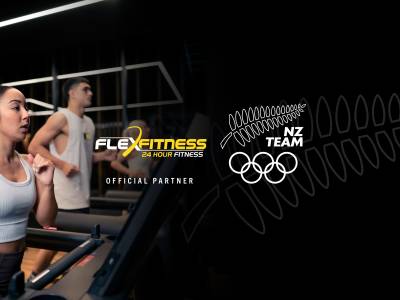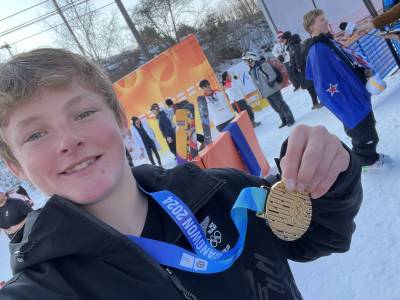Sailing is one of New Zealand's most successful Olympic sports and has produced some of our most well known sporting personalities, with the likes of Barbara Kendall and Russell Coutts.
Sailing (often also referred to as yachting) features races between boats powered by the wind, using sails.
Competition
There are ten events on offer, 4 male and female classes with 2 mixed events.
Men: Four competition classes – Windsurfing IQ Foil, Skiff 49r, Dinghy, Kite,
Women: Four competition classes – Windsurfing IQ Foil, Skiff 49er FX, Dinghy, Kite
Mixed: Two competition classes - Dinghy, Nacra 17 Multihull
Each class concludes with a medal race but before that they race either 10 or 12 depending on the class.
The first-placed boat in each race gets one point; the second two points and so on. Sailors may exclude their worst score in those first 10 (12) races. The 10 boats with the lowest scores progress to the medal race where points are worth double.
Did you know?
New Zealand’s tally of nine Olympic gold medals ranks us ninth on the list of most successful Olympic sailing nations. And with nine golds, eight silver and six bronze medals, sailing is New Zealand’s second most successful Olympic sport.
The most successful Olympic sailor of all time is Denmark’s Paul Elvstrom. He won the first of his four gold medals at consecutive Games in 1948, and was still competing in 1988 at the age of 60.
New Zealand’s most successful Olympic sailors to date is would be Peter Burling and Blair Tuke with four Olympic medals (Gold, and Two Silver). Also, windsurfer Barbara Kendall has three Olympic medals to her name – Gold in Barcelona 1992, Silver in Atlanta 1996 and Bronze in Sydney 2000.
After the 1996 games in Atlanta, the sport of yachting was to be known as ‘sailing’ to coincide with the Federation name change from `International Yacht Racing Union (IYRU)’ to `International Sailing Federation (ISAF)’, and then ‘World Sailing’ in 2016.
The Los Angeles Olympics ushered in a period of sustained success for New Zealand, with medals at every Olympics except Sydney 2000.
Sailing Terminology
470 - A double-handed (two person) mono-hull dinghy with three sails. One sailor is attached to the boat via a trapeze (harness) allowing them, among other things, to counterbalance the force of the wind in the sails by standing on the edge of the boat and leaning out.
49er/49erFX - A double-handed high performance skiff dinghy characterised by its speed and ‘wings.’ Both sailors are in trapezes.
Bow - The front of a boat.
Buoy - A floating marker used to designate key points on the course.
Dinghy - A small boat characterised by having one hull and a centreboard. Laser, Laser Radial, 470, Finn are the classes of dinghy raced at the Olympics.
Centreboard/Daggerboard - An adjustable fin primarily used to stop the boat moving sideways through the water.
Finn - The men’s single-handed Olympic dinghy class. It features one main sail and is heavier than the other classes of dinghy.
Fleet racing - A format of racing where all entries race against each other around a course. Points are awarded relative to where a boat places in the race and are tallied over a set number of races.
Hull - The watertight body of a boat.
Laser/ Laser Radial - A single-handed mono-hull dinghy class with one main sail. A light, simple standardised design – very common around the world – means sailors rely more on their own fitness, agility and strength than other classes. The Laser Radial features a smaller sail than the standard Laser.
Leeward - The side furthest away from the wind.
Mark - A corner of the racecourse as defined by a buoy.
Medal race - The final race of fleet racing format where the points awarded for placings are doubled. This result cannot be discarded from the total score.
Multi-hull - A boat with more than one hull. A boat with two hulls is also known as a catamaran. The Nacra 17 class will debut in Rio as the multi-hull class, featuring mixed crews of one male and one female.
Sailboard - Combines elements of surfing and sailing with a sail attached to a long board. Sailboarding or board sailing is also known as windsurfing. The Olympic sailboard class is the RS:X which has been in place since 2008.
Skiff - A type of light, open dinghy with a self-draining hull. In Rio the 49er (men) and 49erFX (women) are the two skiff classes, each featuring two-person crews.
Stern - The rear of a boat.
Windward - The side closest to the wind. The windward mark is the mark at the end of the upwind (into the wind) leg of the course.
Timeline
1851 - International yacht racing began when a New York Yacht Club syndicate sailed to England where it won a trophy called the Hundred Guineas Cup (since renamed the America's Cup).
1900 - Sailing was first contested as an Olympic sport in Paris and has been included at every modern Olympiad since, except 1904.
1956 - Peter Mander and Jack Cropp were New Zealand’s first sailors to win a medal, claiming gold in Melbourne 1956 in the Lightweight Sharpie class.
1984 - Los Angeles Olympics – the gold medals won by Russell Coutts in the Finn class and Rex Sellers and Chris Timms in the Tornado class ushered in a period of notable success for kiwi sailors with medals won at every Olympics since, with the exception of Sydney 2000 – see the Olympic Medals table above.
2012 The London Olympic Games introduced the match racing event for women – a head-to-head contest of strategy and tactics between teams on two identical boats. Polly Powrie and Jo Aleh became New Zealand’s first ever female gold medallists in a dinghy class (Barbara Kendall won gold at Barcelona in 1992 in board sailing).
Tweet Share
Sailing Games History
-
Olympic Summer Games Tokyo 2020
1 -
Pacific Games Samoa 2019
-
Olympic Summer Youth Games Buenos Aires 2018
-
Olympic Summer Games Rio 2016
1 2 1 -
Olympic Summer Youth Games Nanjing 2014
-
Olympic Summer Games London 2012
1 1 -
Olympic Summer Youth Games Singapore 2010
-
Olympic Summer Games Beijing 2008
1 -
Australian Youth Olympic Festival Sydney Youth Festival 2007
1 -
Olympic Summer Games Athens 2004










